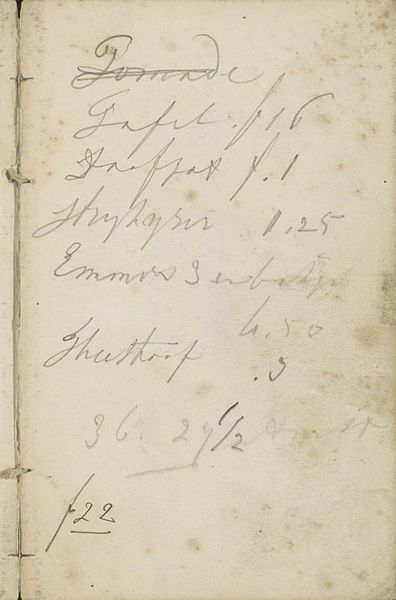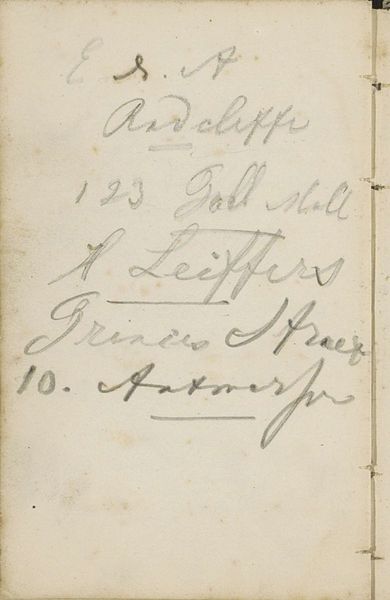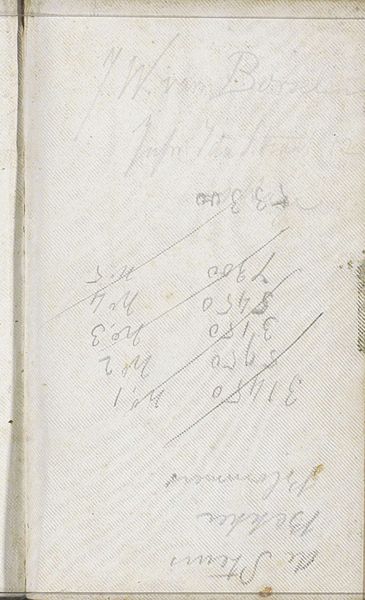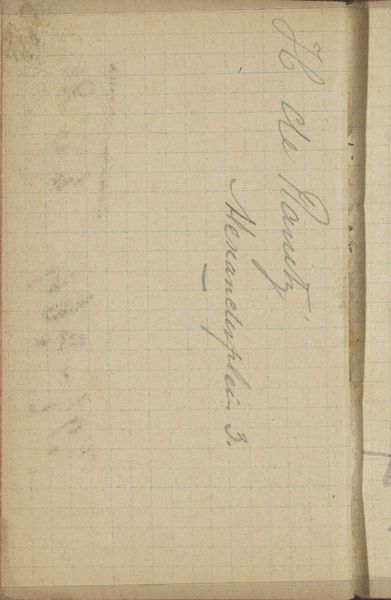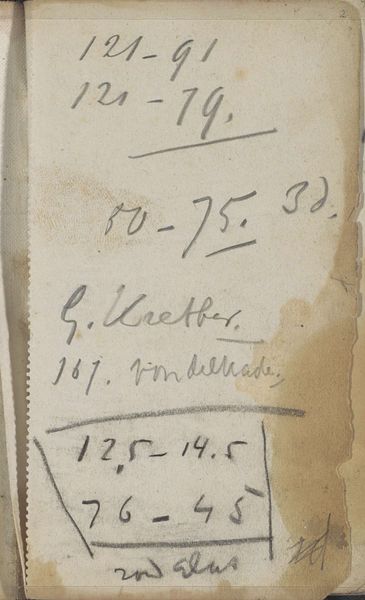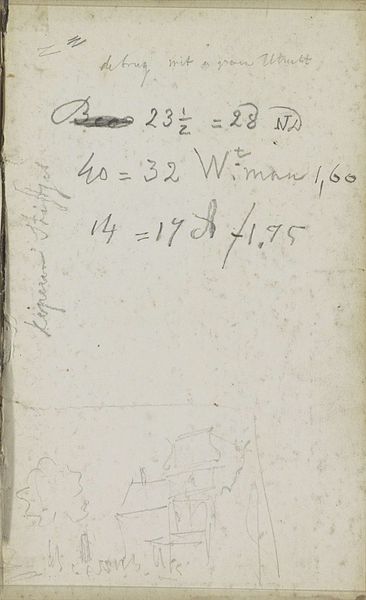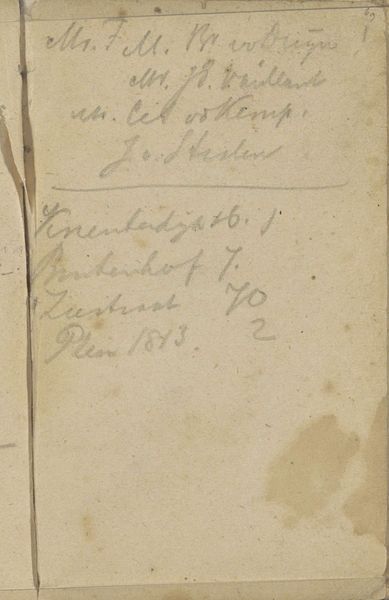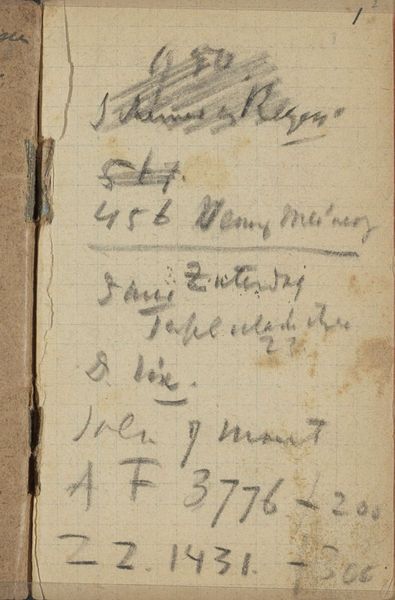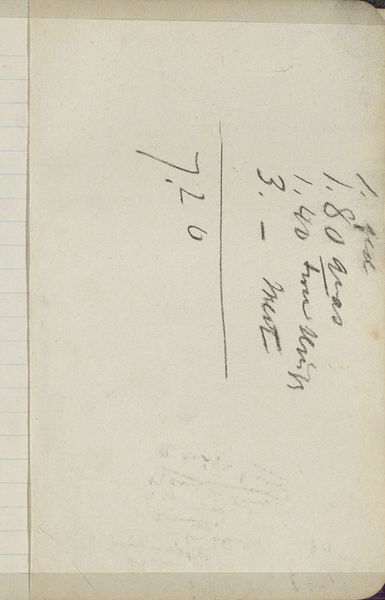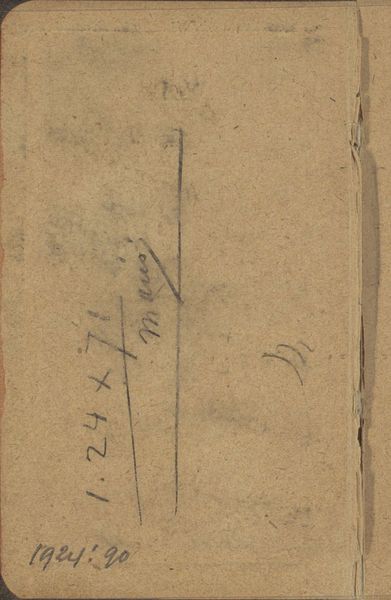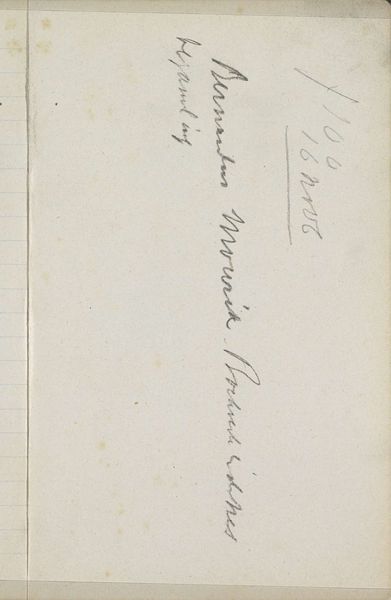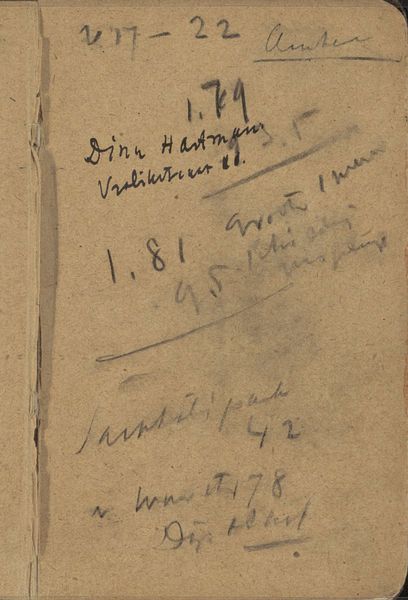
drawing, paper, ink, graphite
#
drawing
#
paper
#
ink
#
graphite
Copyright: Rijks Museum: Open Domain
Curator: What an intriguing find. Here we have "Lijst met uitgaven", or "List of Expenses", a drawing by Willem Koekkoek that dates from around 1849 to 1895. It’s ink and graphite on paper. My first impression? It feels so incredibly personal, doesn’t it? Almost like we’ve stumbled upon someone’s secret thoughts. Editor: Yes, there’s an immediacy, like we're looking over the artist's shoulder as they jot down these numbers. Beyond the glimpse it offers into daily transactions, how might we understand its broader place within Koekkoek's career and the artistic climate of the time? Curator: Koekkoek, primarily known for his cityscapes, often incorporated details reflecting Dutch society. This, although seemingly mundane, carries symbolic weight. The act of meticulously recording expenses speaks to the rising merchant class, the burgeoning economic systems. The values are quite obscured, but it reminds us of cultural transitions visible even in financial accountability. Editor: True. But isn’t there a potential pitfall in assigning profound symbolism to what might have been a simple accounting record? Couldn't it merely be a practice sketch on hand? Perhaps Koekkoek made his urban landscapes observing his local life and the emerging bourgeoisies, the records left him in this specific moment to jot down some values and create an "Artwork". Curator: An interesting point! Yes, certainly. But its location within the Rijksmuseum elevates it beyond the ordinary. It is not displayed for its utility, but rather because the aesthetic sensibilities, its imperfections in writing and drawing all invite interpretations. Even in its plainness, there is something almost archetypal of the values that shaped our daily living back then. The act of assigning value and measuring trade has cultural resonance for modern museum audiences. Editor: So, in the end, it functions as an open portal into Dutch fiscal identity, a very subtle nod to broader themes—an interesting juxtaposition indeed, that a humble list such as this one sparks discussions of artistic value, history and cultural context. Curator: It reveals that symbolism, like value, can be found where one least expects it.
Comments
No comments
Be the first to comment and join the conversation on the ultimate creative platform.
